“The prairie, these plains….It was as if nature had taken solitude and fashioned it into something visible, carved out the silences into distances, into short grass forever flowing and curving, a vast sky forever pressing down, nothing changing, nothing but sameness, day after day after day, as far as you could see, as far as you could go. It was like the solitude of God…as awesome, and as beautiful.” from Johnny Osage by Janice Holt Giles
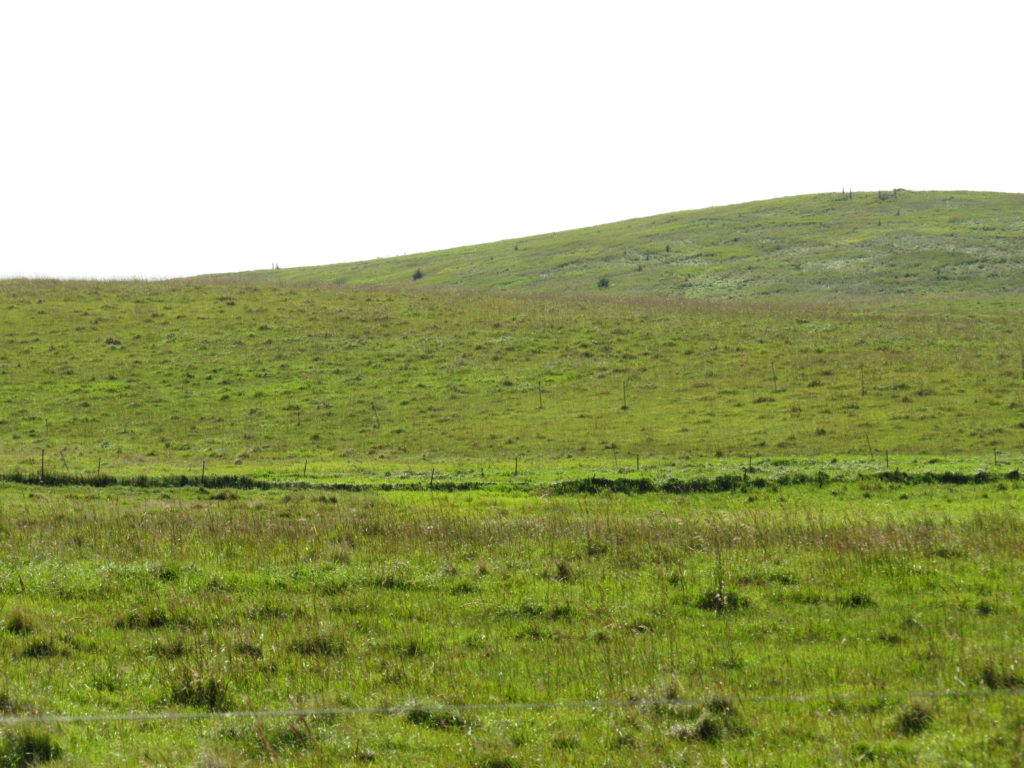
Seeking the solitude and healing of the prairie, I drove my wretched self to my Mom’s place. It’s not an endless prairie like the early 1800’s of Johnny Osage’s time, but there is still enough around to calm my nerves and soothe my soul. Seeing cattle out on the grassland adds another layer of calm and ‘right-ness’ to my world.
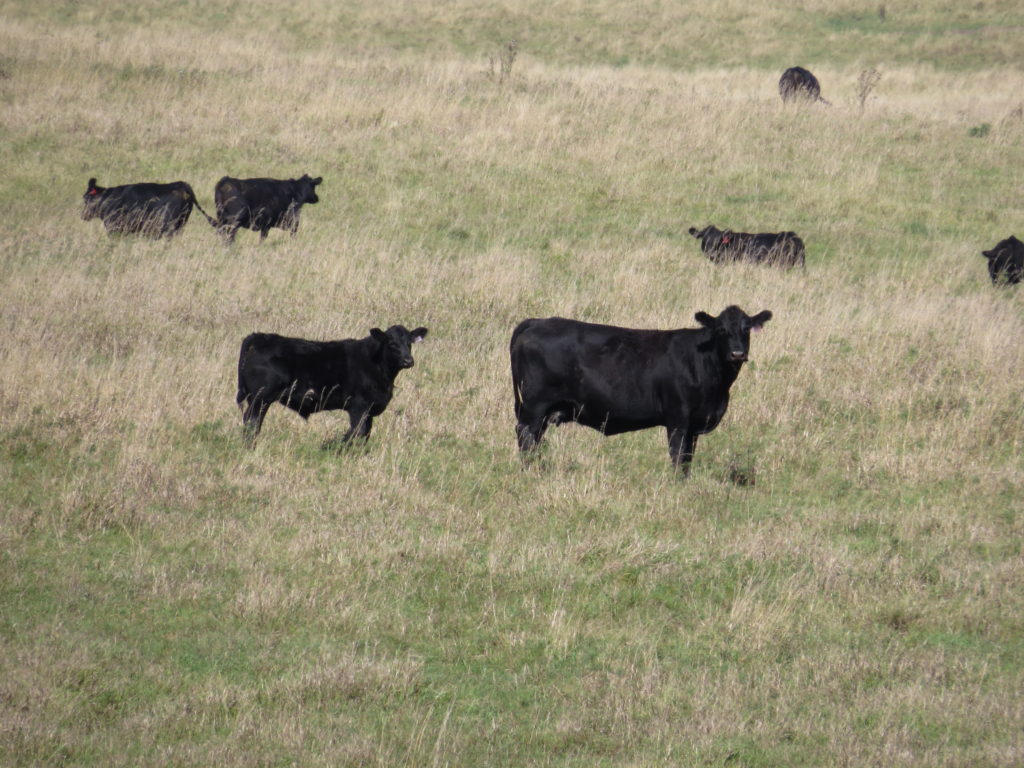
There are certain sights that are so familiar to me, almost to the point of not noticing—like the cattle standing around the dirt perimeter of a ‘stock dam’ dug out of the prairie grass. Every stock dam, slough, creek, and lake were filled and overflowing with all the rain that has fallen, from Spring thaw until this late summer. There was more water and more fallow fields (from flooding) than I have ever seen in eastern South Dakota. Too much of a good thing. Too much for normal boundaries to handle.
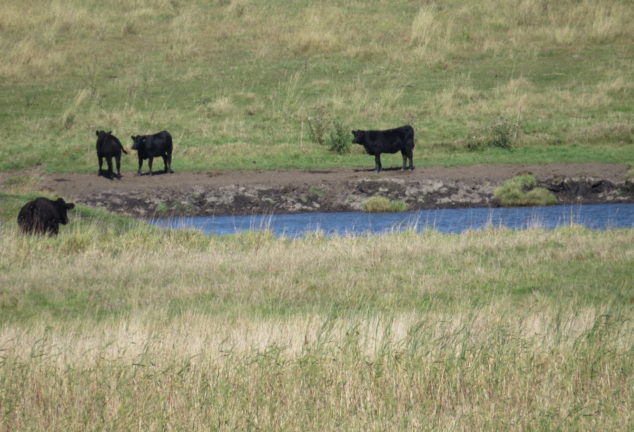
Late summer is the perfect time to appreciate the beauty of the prairie grasses: the maroonish-red of Big Bluestem, the delectable native grass that is like ‘ice cream for cows’…
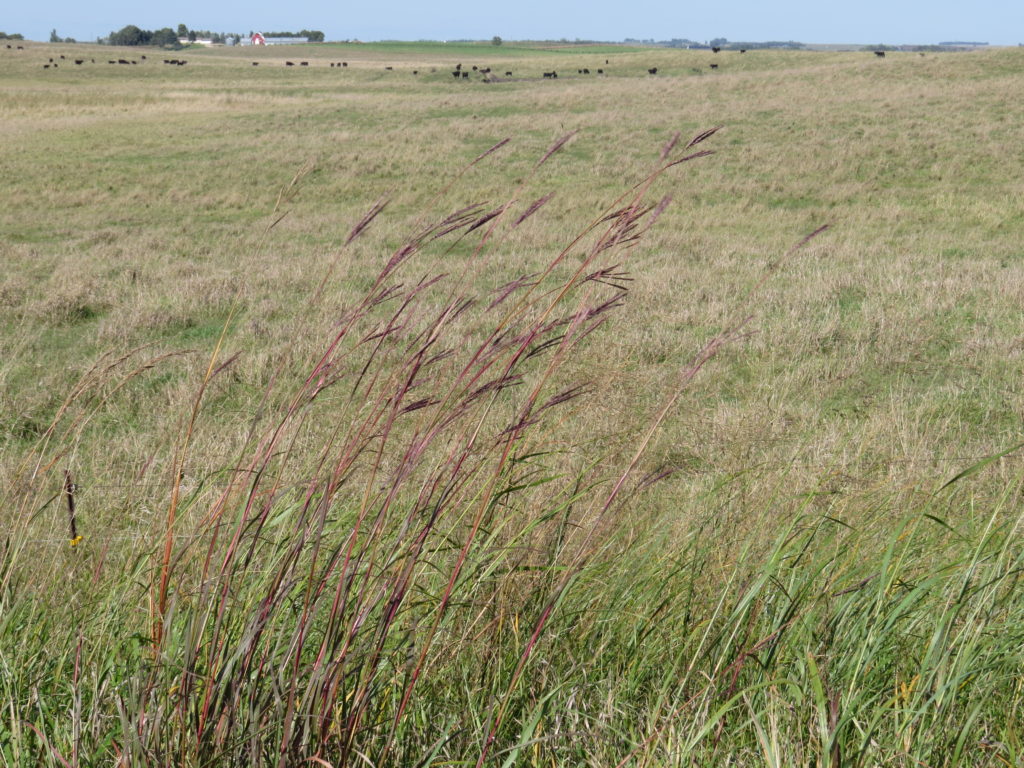
the golden-brown of the tall, sturdy Indiangrass…
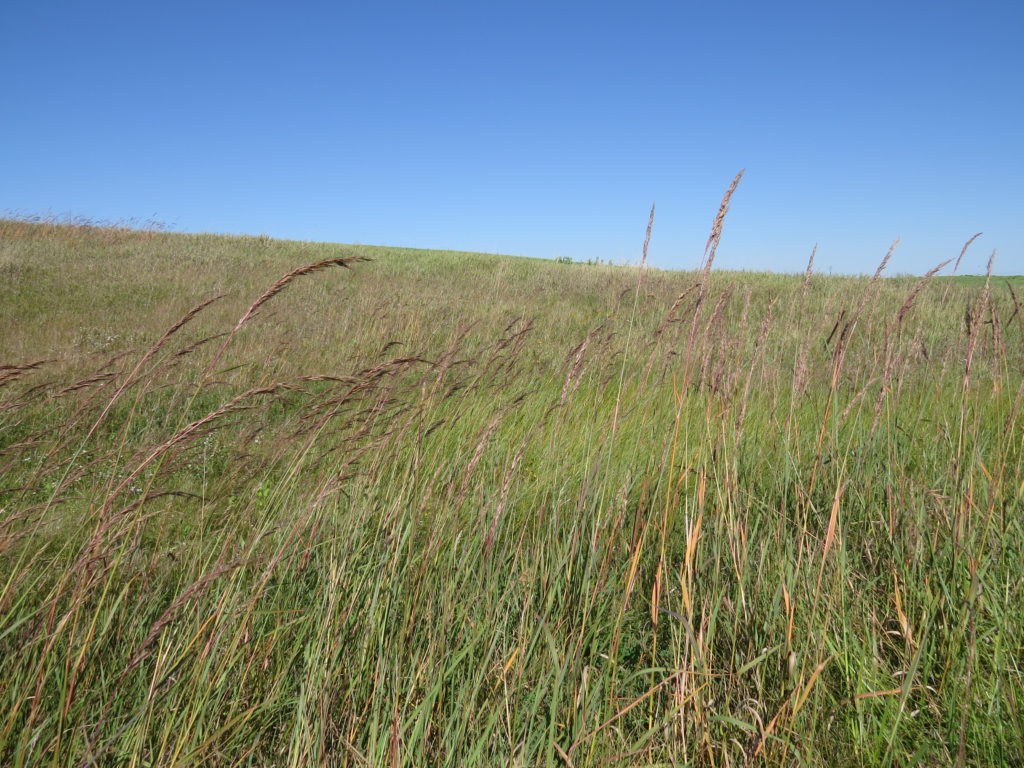
and the wispy green-gold of Switchgrass.
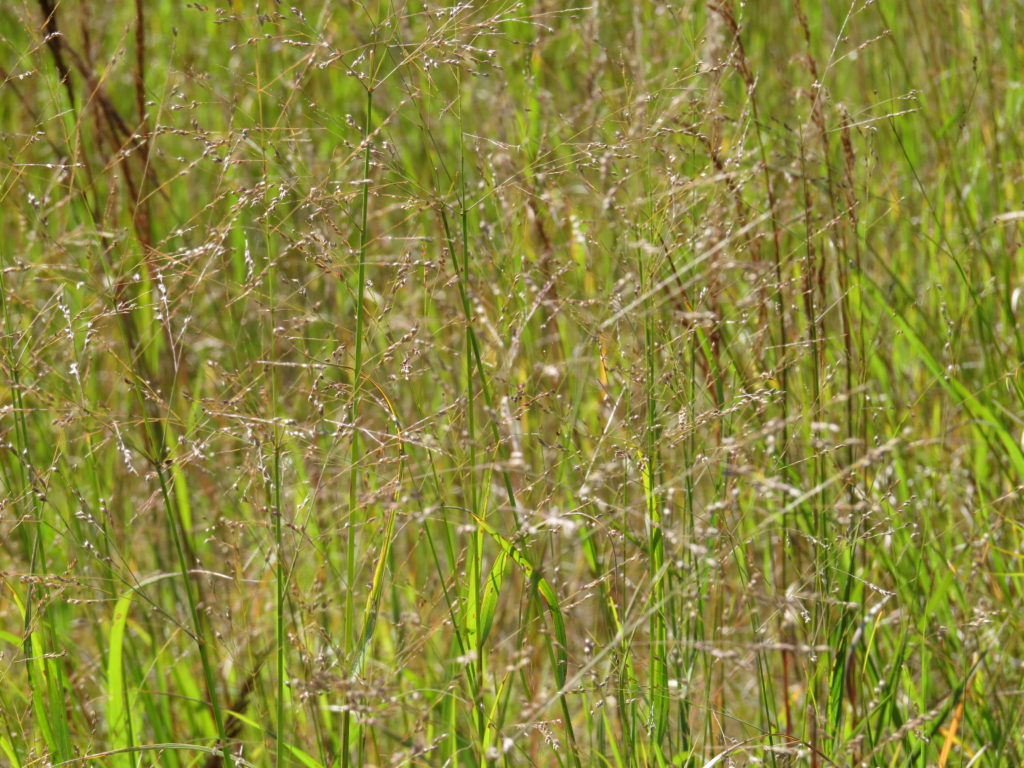
Old barb-wire fencing rolled into a neat circle hung on a gray corner post. Electric fencing is taking over boundary patrol for most cattle pastures, it seems. But the words cattle and prairie cannot be put together without the iconic image of the rusty wire and gray posts.
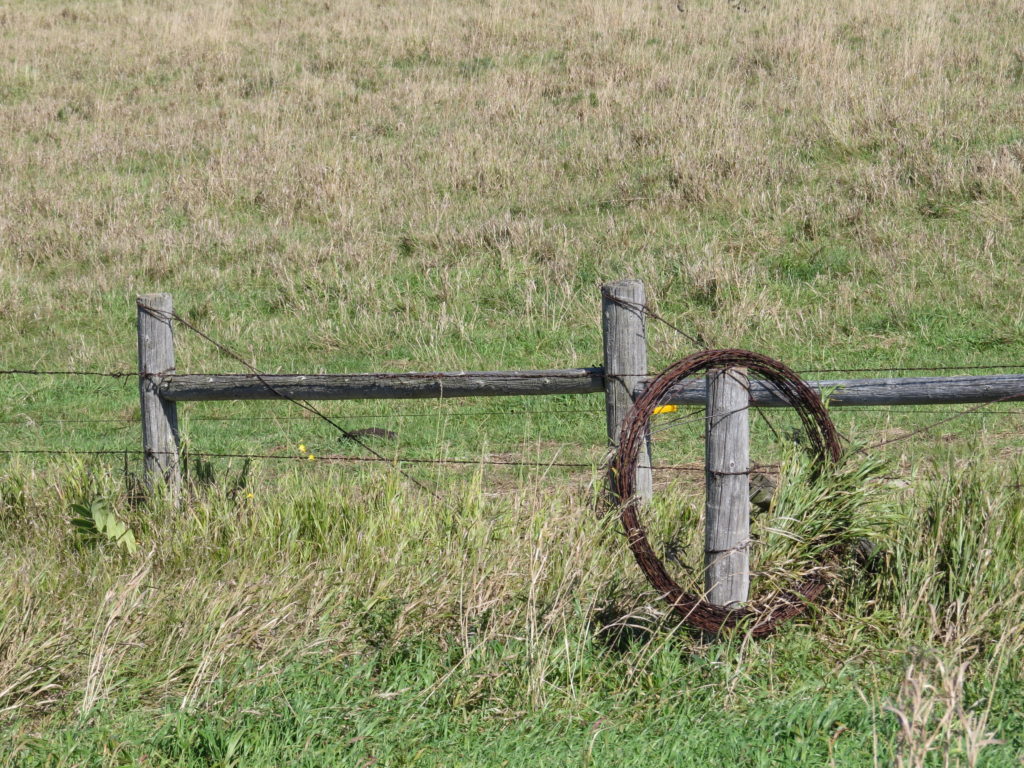
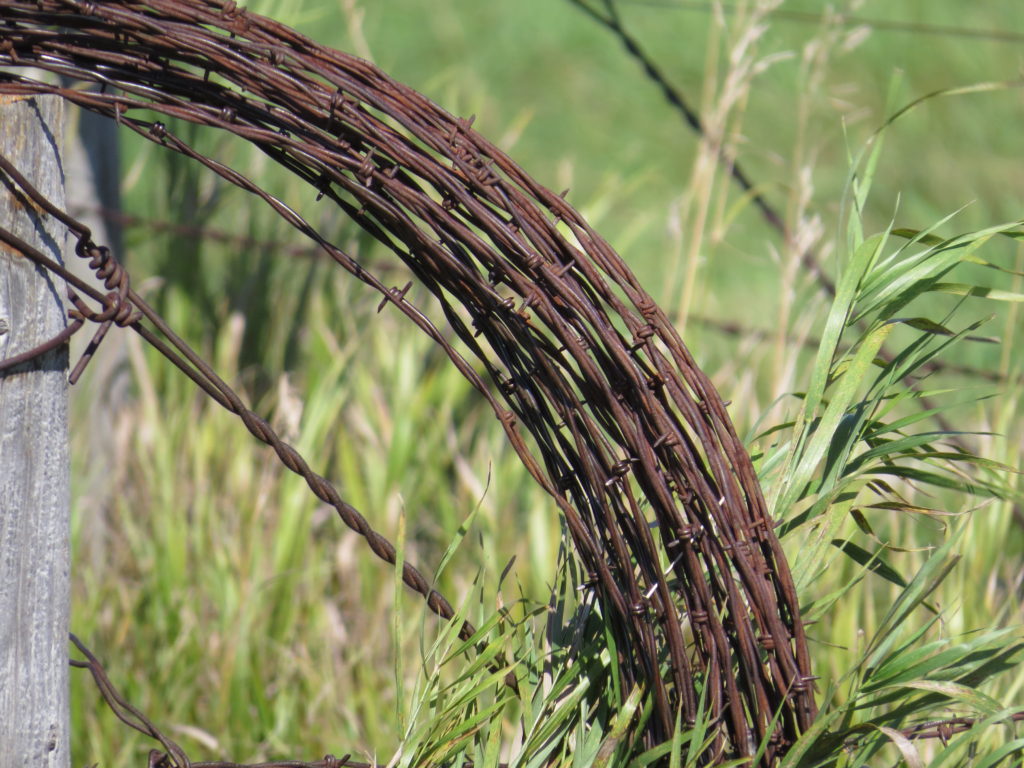
Another prairie grass, shorter in statue than the above three, is Sideoats Grama. The small oat-like seeds hang on one side of the grass stem.
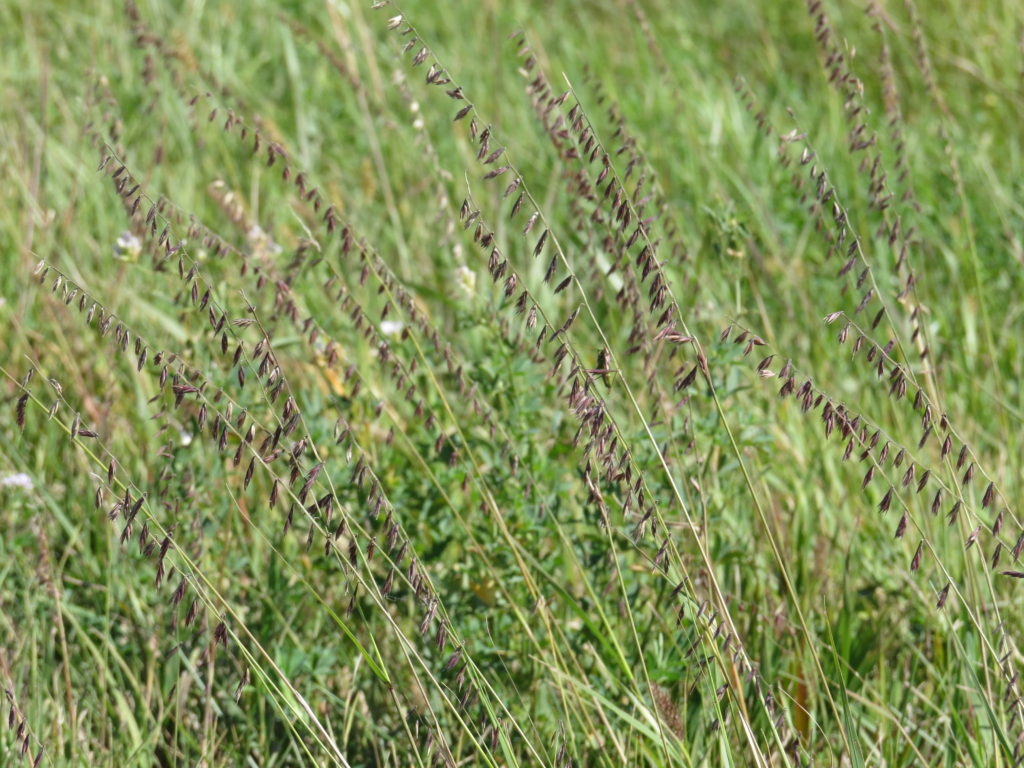
Alfalfa and Sweet Yellow Clover are other haymakers found among the grasses. These legumes add more protein content to all-grass hay.
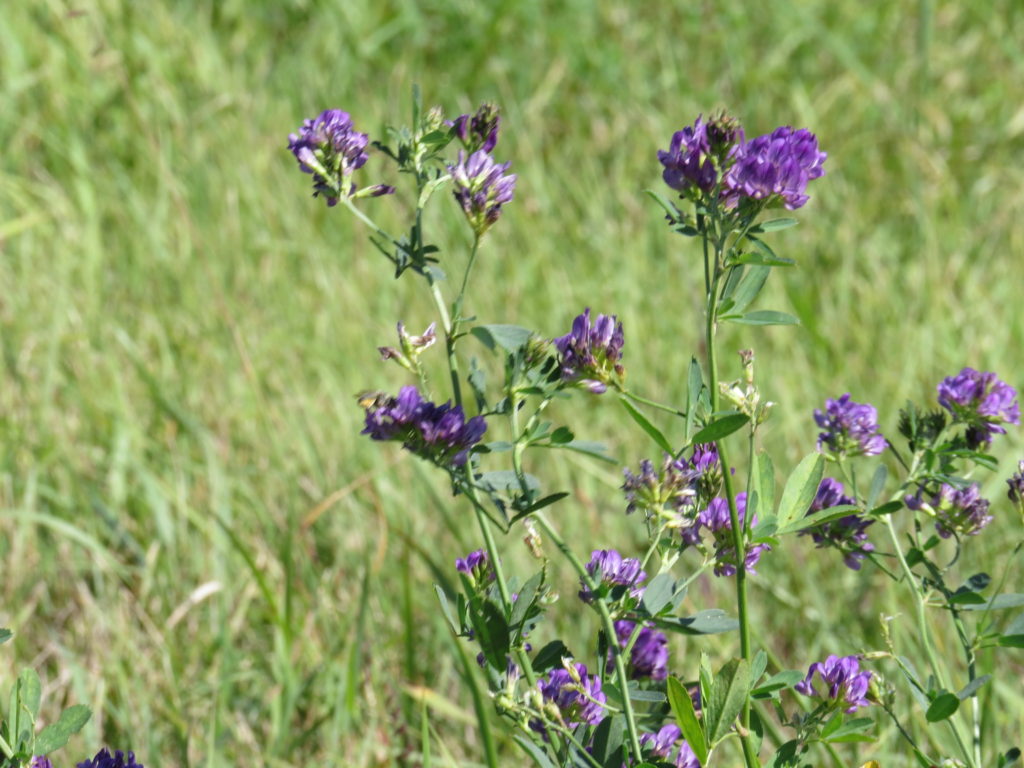
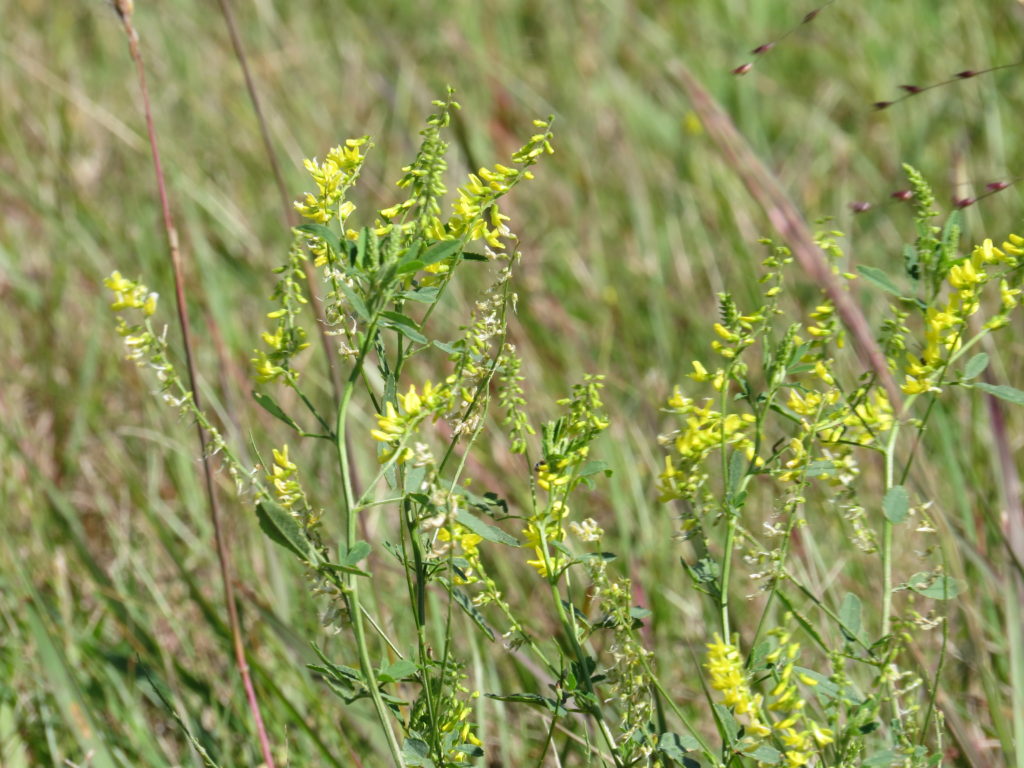
No prairie pasture picture is complete without a standard barb-wire gate attached to the fence post with a tight, smooth wire. If in a vehicle, the passenger usually ‘gets the gate’; on horseback, we used to take turns.
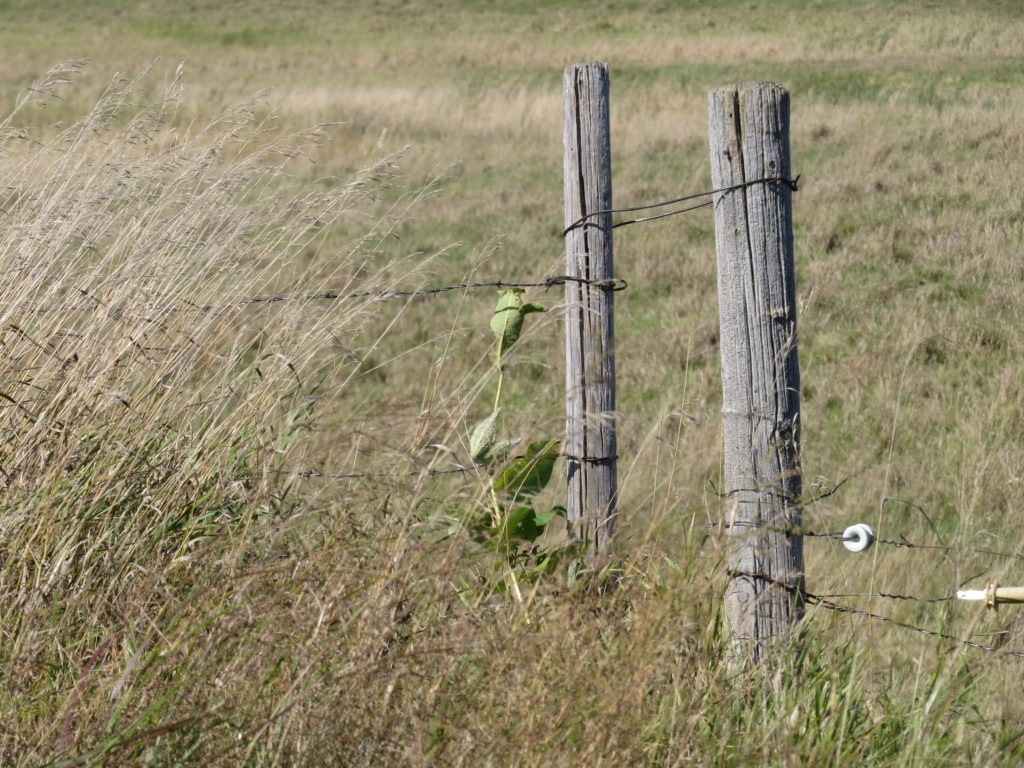
On the post that anchors the barb-wire gate is an old weathered board. It used to display a ‘No Trespassing’ and/or ‘No Hunting’ sign. In other words, ‘Stay Out.’ This is private property; this protects the cattle who live here.
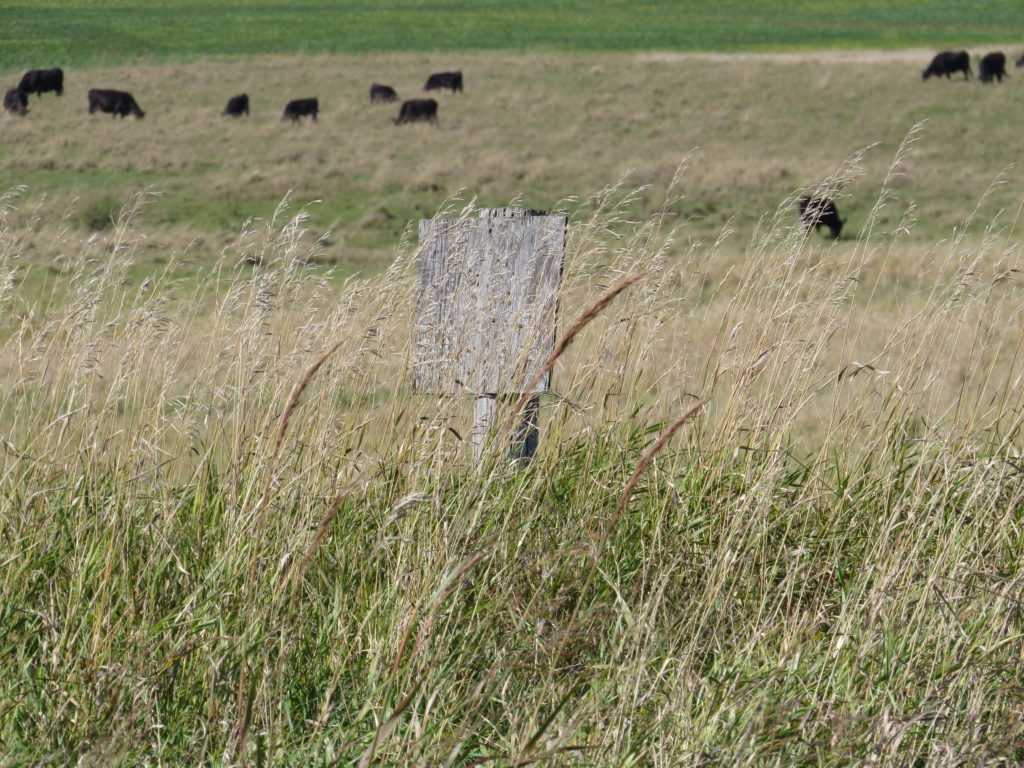
Rarely is it one event in our lives that brings us to our knees—or takes me to the prairie. Usually it is a foggy-morning-freeway-pile-up of things that descend upon us. We are built to be resilient to the many physical and emotional assaults that we experience in life, but at times, it is too much for our normal boundaries (and bodies) to handle. We need familiarity, protection, good nutrition, sleep, and solitude to ‘right’ ourselves, to calm ourselves, and to heal ourselves. That’s what the prairie does for me—the awesome and beautiful solitude of God.
Thanks for taking me along on your trip to the prairie through your beautiful pictures and descriptions. I hope you found re-balance, healing and restoration in the awesome solitude of God.
Thank you, Bob. Solitude and time are great healers.
So glad you found healing. Thank you for sharing the meaning of some of the “medicine” you find on the prairie. As someone who grew up near mountains and ocean, it helps me understand the deep peace you find in a very different environment.
That darn “foggy-morning-freeway-pile-up!” May the fog lift soon….
Thank you, AnnElise. I’m sure the ocean and mountains are healing for many. I’m anxious for a clearing.
This is my view in life! This year that view has changed – to much water and water in places where it shouldn’t be- and that has certainly put a damper on our perception of life around us. But, you are correct it is very calming and I would miss it if I left. As I look out and see this “nothingness” I often think about the prairie women before me and how the solitude bothered them. (One of my favorite books to share with my students is “Dandelions” by Eve Bunting). In this crazy life, I appreciate my drive home and see the cattle in the pastures and feel myself de-stress. Thank you for sharing this today.
Barb, I wish I could visit you–it has been too long! I will look up that book! I don’t know it. You are fortunate to see these sights every day!